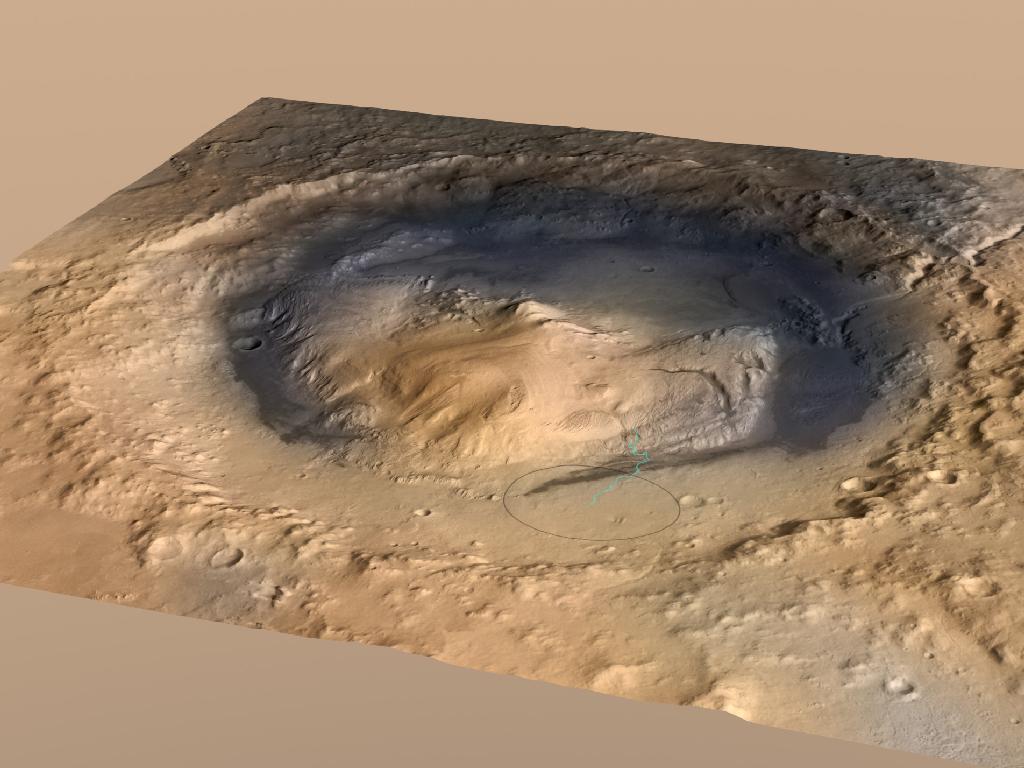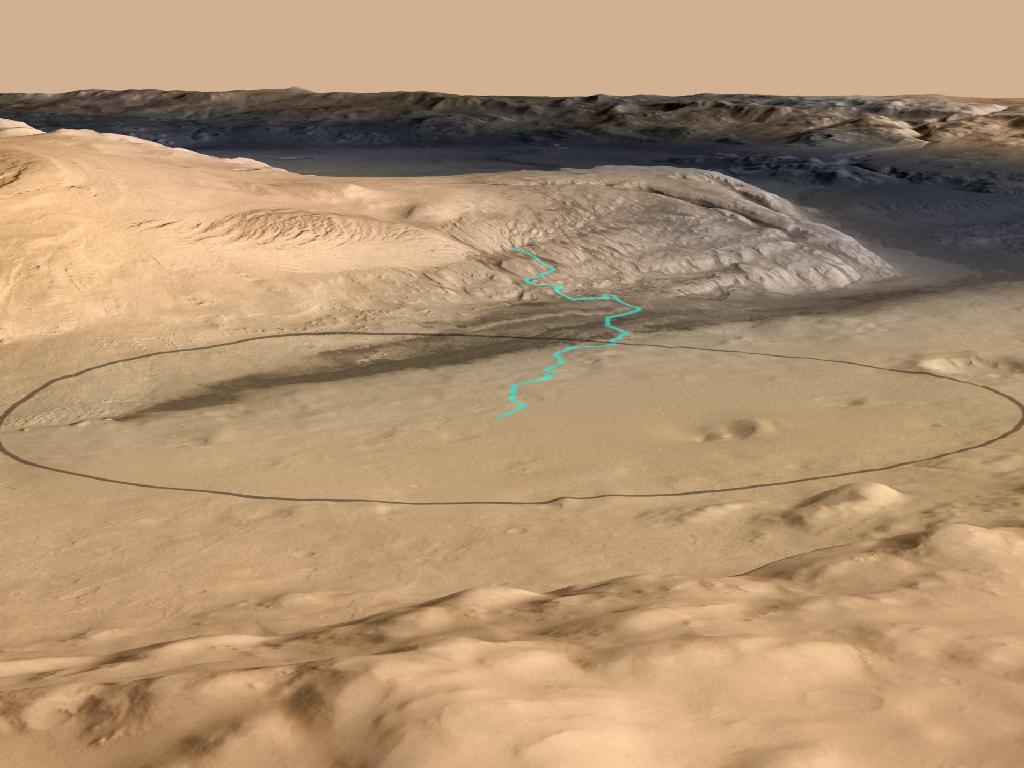NASA's New Mars Rover Will Explore Towering 'Mount Sharp'

A huge mountain on Mars that NASA's newest rover will explore after it touches down on the Red Planet in August now has a name: Mount Sharp.
The science team behind NASA's Mars rover Curiosity announced the new name for the mountain Wednesday (March 28). The moniker was picked to honor the late geologist Robert Sharp (1911-2004), a pioneer planetary scientist, influential teacher of many current leaders in the field and team member for NASA's first few Mars missions, researchers said.
"Bob Sharp was one of the best field geologists this country has ever had," Michael Malin of Malin Space Systems, principal investigator for two of Curiosity's 10 science instruments and a former student of Sharp's, said in a statement. "We don't really know the origins of Mount Sharp, but we have plans for how to go there and test our theories about it, and that's just how Bob would have wanted it."
The 1-ton Curiosity rover — the centerpiece of NASA's $2.5 billion Mars Science Laboratory (MSL) mission — blasted off in November and is slated to land at the Red Planet's Gale Crater on the night of Aug. 5. Its main mission is to determine if the Gale Crater area is, or ever was, capable of supporting microbial life. [Video: Curiosity's Peculiar Landing]

Mount Sharp rises from the center of the crater, looming 3 miles (5 kilometers) above the surrounding terrain. Its layered rocks preserve a record of Mars' changing environmental conditions going back a billion years or more, providing an inviting exploration target for Curiosity.
Mars orbiters have detected minerals near Mount Sharp's base that only form in water. So some of its lower layers might tell of a lake within Gale Crater long ago, or they might indicate wind-delivered sediments later soaked by groundwater, researchers said.
Higher layers, on the other hand, may represent wind-blown dust deposited after Mars shifted from a relatively wet world to the dry and frigid planet we know today.
Get the Space.com Newsletter
Breaking space news, the latest updates on rocket launches, skywatching events and more!
"Mount Sharp is the only place we can currently access on Mars where we can investigate this transition in one stratigraphic sequence," said John Grotzinger of Caltech, MSL's chief scientist. "The hope of this mission is to find evidence of a habitable environment; the promise is to get the story of an important environmental breakpoint in the deep history of the planet. This transition likely occurred billions of years ago, maybe even predating the oldest well-preserved rocks on Earth."
Mount Sharp is a gently sloping mound rather than a steep, jagged peak, so Curiosity should be able to drive pretty far up it over the course of its operational life, researchers have said.
The rover's nominal mission was designed to last about two Earth years, but it wouldn't be surprising if Curiosity kept on chugging long beyond that. NASA's Opportunity Mars rover, after all, is still going strong today more than eight years after landing, and its original mission life was pegged at 90 days.
Whatever Curiosity ends up finding would doubtless have intrigued and excited Bob Sharp, those who knew him say.
"Recognition of this remarkable scientist and leader by the naming of Mount Sharp is highly fitting, and I hope it will serve to perpetuate his legacy," said former MSL chief scientist Edward Stolper, provost at Caltech, where Sharp taught for many years.
Follow SPACE.com for the latest in space science and exploration news on Twitter @Spacedotcom and on Facebook.
Join our Space Forums to keep talking space on the latest missions, night sky and more! And if you have a news tip, correction or comment, let us know at: community@space.com.

Space.com is the premier source of space exploration, innovation and astronomy news, chronicling (and celebrating) humanity's ongoing expansion across the final frontier. Originally founded in 1999, Space.com is, and always has been, the passion of writers and editors who are space fans and also trained journalists. Our current news team consists of Editor-in-Chief Tariq Malik; Editor Hanneke Weitering, Senior Space Writer Mike Wall; Senior Writer Meghan Bartels; Senior Writer Chelsea Gohd, Senior Writer Tereza Pultarova and Staff Writer Alexander Cox, focusing on e-commerce. Senior Producer Steve Spaleta oversees our space videos, with Diana Whitcroft as our Social Media Editor.









